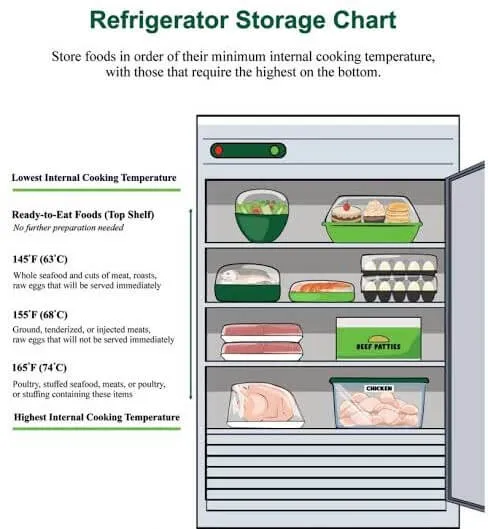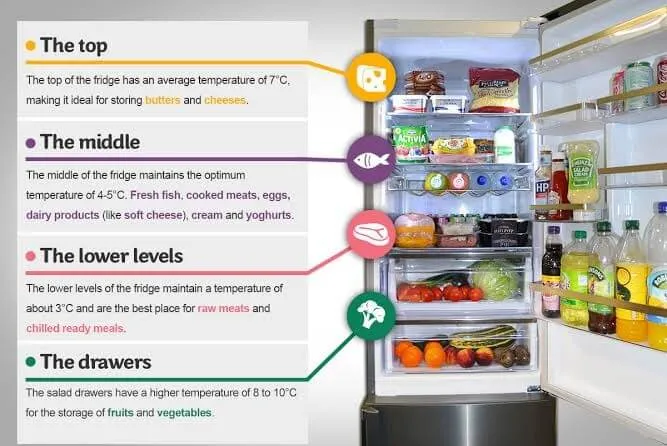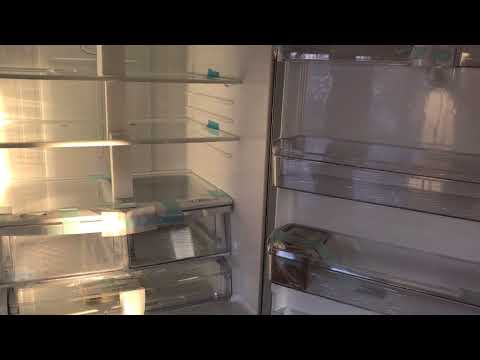You’ve got a new refrigerator. You’re likely thinking, “When can I start storing my favorite foods in it?” That old saying might not be 100% accurate, but it gets the point across. Just like you wouldn’t jump into a car without knowing how to drive, you shouldn’t start filling up your new fridge without understanding its cooling process.
Honestly, there’s no fixed answer that will fit all refrigerators since the specific wait time before turning on your refrigerator significantly depends on the type of refrigerator and how it was brought to your house – upright or laid on its side. There are several other factors that you must also need to bear in mind in order to be safe and not damage your brand new refrigerator out of excitement after you purchase one and bring it home.
Now, don’t worry. You don’t need to be a refrigerator expert. We’re here to make things crystal clear and make sure you and your refrigerator start off on the right foot. So, let’s chill and get into it!
Table Of Contents

Prepping the Refrigerator for First Use
So, you’ve just scored yourself a brand spanking new refrigerator. Congratulations! But before you start filling up its shelves, there are a few necessary steps to take.
- Clean It: First things first, you’ll want to give your new appliance a good clean. Even though it’s fresh from the store, there can still be dust or residue from the manufacturing process. Just a quick wipe down with a damp cloth and mild soap will do the trick.
- Let It Chill: After cleaning, plug it in and let it reach its optimal temperature. This usually takes about 24 hours. During this time, it’s best to keep the refrigerator empty and the door closed as much as possible.
When Should You Plug in Your New Refrigerator ?
With every refrigerator, there’s always a user’s manual booklet with all the necessary instructions and guidelines from the respective manufacturers. In that guide, it should be mentioned how long you’re supposed to wait before switching it on for that specific refrigerator model. You can also watch this video to get a quick outline of all the do’s and don’ts to consider before plugging in your brand new appliance.
Nevertheless, in a general sense, our refrigerator experts do not recommend turning on the refrigerator right after it was moved from one location to the other. Because everything inside was shaken while you were relocating, it’s recommended to give some time to the compressor to settle down.
If the refrigerator was moved in an upright position for a relatively short distance, resting it for about 1-2 hours will be enough. On the other hand, if it was shifted on its side at an angle of 45° or less, you should rest the refrigerator for at least 4-5 hours before plugging in the power cord.
How Long to Wait Before Putting in Food Your New Refrigerator?
Curious about when to fill your new refrigerator? We’re here to clarify. Before you fill it with delicious treats, consider a few things. Rushing might risk your cooling system. Let’s discuss key points before you start loading your new refrigerator.
Generally, you should wait at least for 5 hours to get the internal space of your refrigerator to the optimum temperature. Try to refrain from opening the refrigerator door for no reason in this duration as it may lead to unnecessary moisture build-up inside as warm air will sneak in while cold air gets out. You can start storing foods and drinks when the refrigerant compartment has an ideal temperature of 3°C to 4°C and the average temperature of the freezer gets anywhere between -15°C to -18°C.
Some refrigerators even include a LED display screen where the current temperature can be checked. There are a few more things to consider before stocking your new refrigerator with food.
The Long and Short of It
Typically, the golden rule is to wait 24 hours before putting food in your new refrigerator. This allows the appliance to achieve the correct temperature after being moved, which can disrupt its cooling system. But, as with most things in life, there are exceptions to this rule.
When You Can Bend the Rule
Sometimes, you don’t necessarily need to wait the full 24 hours. If your refrigerator was kept upright during the entire move, you could reduce the wait time to a mere 3-4 hours. The key to this shortcut is ensuring the refrigerator wasn’t tilted or laid flat, which can cause oil to flow into the cooling tubes and disrupt its performance.
Factors to Consider
So, despite the excitement of a new refrigerator, patience is your friend here. A little wait time can ensure your food is stored safely and your appliance operates efficiently. Happy cooling!
How to Switch Food to a New Refrigerator?
Now that your refrigerator is all set, you can start organizing the shelves and drawers with whatever you like. But, mindlessly inserting stuff here and there will not be a good idea. Keeping the right foods in the right place will maximize cooling efficiency and the cold air will be able to circulate evenly throughout. Follow our suggestions below and wave goodbye to unsightly fridge mess:
Tips on How to Store Food the Right Way Inside the Fridge-Freezer

Refrigerator Section:
Most refrigerators have shelves on the refrigerator door. The temperature is comparatively a bit warm on this side. You can store liquids and beverages (especially juices, jam, jelly, pickles and other condiments with natural preservatives) in the form of cans and glass bottles on the refrigerator door apart from the egg tray.
The best refrigerators have a special compartment within the fridge where you can freely regulate the internal temperature however you like based on what you want to store inside (such as the ‘Flex Zone’ in Samsung refrigerators). In such special customizable compartments you can keep anything from fresh fruits, veggies, snacks and delicacies to dairy products and even beverages if you want.
If your fridge has crisp drawers, it’s recommended that you keep fruits and veggies in those compartments to preserve the freshness of the green produce much longer. If your fridge doesn’t have separate crisp drawers, you should store the fruits and leafy vegetables on the highest shelf inside.
The temperature is likely to fluctuate more near the lower shelves so you should avoid storing delicate foods in the lower compartments of your fridge such as milk or eggs. In the bottom shelves where the temperature is supposed to be colder than the rest of the fridge, you can store cold-cuts, fish, meat or even chicken.
In the other remaining drawers or shelves, you can keep leftover foods for the next meal such as rice, curry, a slice of pizza or anything.

Freezer Compartment:
Organizing foods correctly inside the freezer will help preserve them for months and prevent them from spoiling.
In the freezer door, you can store butter, cheese, milk, nuts or even herbs. And in the main shelves, you can store raw products such as raw meat, fish and other processed meat products. In the freezer section, placing foods in airtight zip-lock bags or sealed glass containers is a wise idea to prevent them from getting freezer burn.
Generally, it’s advised to store meat, fish and poultry on the top shelves inside the freezer and other soft-freeze items such as yogurt, ice cream or fresh berries in the lower decks.
Wrapping Up
In conclusion, getting a new refrigerator is an exciting venture. The excitement and thrill to beautifully organize it just the way Pinterest has taught you over the years keeps piling up. However, it’s crucial to understand the right time to start stocking it with food. This ensures optimal performance and longevity of your appliance.
Well, in this article, we covered all the answers for you including some tips for correct and proper organization. By adhering to these guidelines, you’ll ensure your food stays fresh and your new refrigerator lasts longer.
